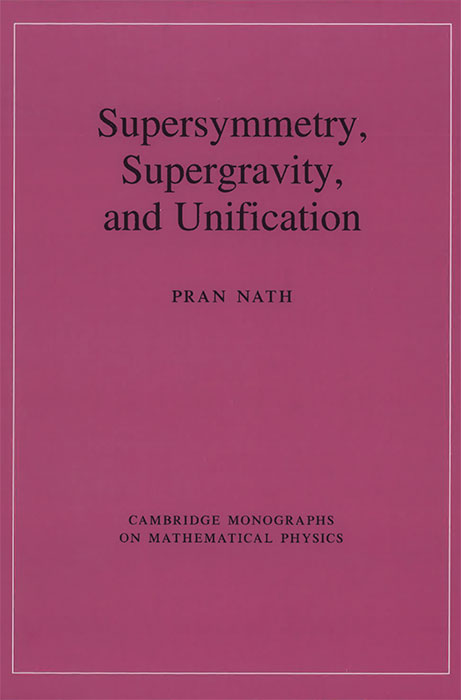By Pran Nath
Cambridge

This book discusses the role played by supersymmetry, and especially supergravity, in the quest for a unified theory of fundamental interactions. These are vast subjects, which not only embrace particle physics but also have ramifications in many other fields, such as modern mathematics, statistical physics and condensed-matter systems.
The author focuses on a rather specific subject: supergravity as a plausible scenario (perhaps more convincing than supersymmetry itself) for physics beyond the Standard Model. This justifies the way the author has chosen to distribute the material over the 24 chapters, for a total of 500 pages.
The first seven chapters introduce the field theories and symmetry principles on which a framework for the unification of particle forces would be based. After a short history of force unification, the author covers general relativity, Yang–Mills theories, spontaneous symmetry breaking, the basics of the Standard Model, the theory of gauge anomalies, effective Lagrangians and current algebra.
Supersymmetry is introduced next, with a short mathematical formulation including the concepts of graded lie algebras, superfields and the basic tools needed to construct (rigid) supersymmetric field theories, their multiplets and invariant Lagrangians. Non-supersymmetric grand unified theories and their supersymmetric extensions are also reviewed, investigating in particular the potential role they play in gauge coupling unification. It is surprising that the author does not discuss the original motivation for advocating supersymmetry in this context, which is related to the hierarchy problem and to the issue of naturalness of scales. No such discussion occurs in this chapter nor in the following one, devoted to the minimal supersymmetric Standard Model. The theory of supergravity and its mathematical structure, including matter couplings, is briefly exposed as well.
The second half of the book includes five chapters dedicated to the phenomenology of supergravity, covering in detail supergravity unification, CP violation, proton decay and supergravity in cosmology and astroparticle physics. In particular, supergravity inflation and supersymmetric candidates for dark matter are discussed at length. Further theories of supergravity and their connection to string theories in diverse dimensions are only briefly touched upon.
The last part of the book provides some tools, such as anti-commuting variables and spinor formalism, which are needed to write supersymmetric Lagrangians and to extract physical consequences. Notations, conventions and other miscellaneous arguments including further references conclude the volume.
The book can be considered as a valuable and updated addition to Steven Weinberg’s third volume on supersymmetry in The Quantum Theory of Fields series (2000, Cambridge University Press).
The author is a world expert on supersymmetry and supergravity phenomenology, who has contributed to the field with many original and outstanding works.
Certainly useful to graduate students in physics, the book could also prove to be a resource for advanced graduate courses in experimental high-energy physics.







